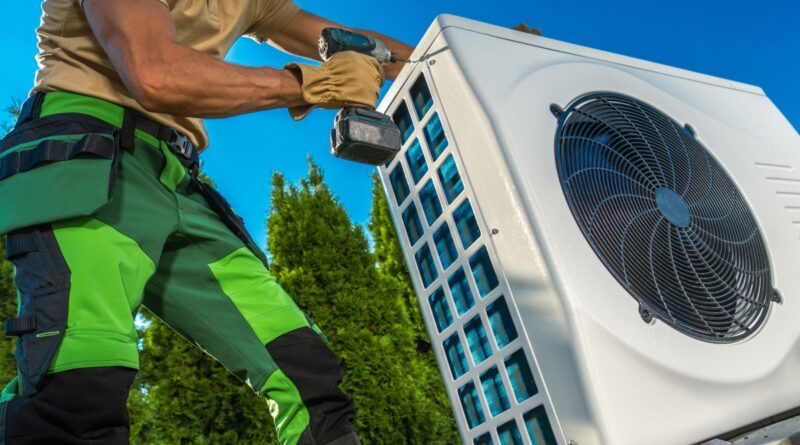Limble raises $58M at a $450M valuation to help orgs track and maintain ‘dumb’ physical assets
Advances in Internet of Things technologies promise to give organizations and us ordinary people an unprecedented view of all of the objects we own and use — where they are, how they’re working and if they’re not working.
But what about the vast swath of physical assets and environments that are not connected, and may not be for some years to come? Today, a startup called Limble — which has built a platform to track various ‘dumb’ and unconnected physical assets for businesses — is announcing $58 million in funding, money it will be using to continue expanding the business.
Goldman Sachs Growth Equity is leading this Series B and it appears to be the sole backer in the round. Limble has confirmed that its post-money valuation is now $450 million.
This is, especially in the current market, a significant jump on its last valuation. The company last raised funding, an extension of its Series A, just nine months ago, in September 2022. At that time, per PitchBook data, its valuation was just $170 million.
But with revenue growth of 130% in the last year, and a list of customers that includes DHL Global Forwarding, Holiday Inn, L’Oréal, McDonald’s, Nike, Pepsi, RiteAide and Unilever, you can see why investors might be very interested now.
Also notable is the company’s resourcefulness: Limble has been around for nearly a decade (founded: 2015) and in that time, the company had raised just $34 million, with previous investors including AlbumVC, which like Limble itself is based in Lehi, Utah.
The sector of enterprise IT that Limble is targeting sits between two generations of how businesses have been run in the past, and are increasingly being run these days. In the twenty-first century, especially post-pandemic, you might hear a lot about digital transformation, cloud migration, and, yes, IoT if you’re in a sector that has a lot of physical assets in its operations. Everyone either uses a laptop, or a smartphone, or a combination of the two to improve communications and productivity. These devices are not just to help people organize themselves, but to manage and interact with the apps, objects and people that are also a part of their businesses.
Business of yore is a very different beast: Some might have had access to computers, but it was certainly not a ubiquitous, default state of affairs, especially in cases where a business had a large population of workers who weren’t tied to desks. For those who were at desks or managing things from a desk, apps were more likely “software” on premises and not in the cloud, and those objects in the business were very much not connected.
While we’re slowly all migrating into the future, the dirty secret of enterprises (big and small) is that there are still large swaths of legacy businesses that are firmly ensconced in the past way of doing things. They may have thousands of physical devices, such as say air conditioners, on their properties, which are not able to be maintained automatically.
Limble’s approach is to build software that does live in the cloud, but is designed to help organizations manage the assets whose roots are in the older way of doing things: They’re not connected, and they may never be.
The startup’s specific area of business is called CMMS, short for computerized maintenance management systems, that is effectively exactly what it provides: up to date software that helps businesses track all of their assets and ensure that they are all working as they should, with schedules to help its customers maintain a regular cadence to proactively check when items are due for regular inspections or service.
The fact that Limble’s core business is tied in with dumb objects has given it a very big opportunity to pick up new customers: Although cloud migration and digital transformation is most certainly happening in the world of work, there are thousands of companies out there that are not adopting that wholesale, and some not at all.
Ironically though its leaning into legacy equipment also meant that the company found it a hard sell in its earlier years, not just with fundraising and convincing tech investors to back a business profiting off of “low tech” but also with businesses themselves, which by their nature would have been slow to adopt any kind of new software, with many resorting to basic spreadsheets, sometimes even on physical paper, to manage the kinds of schedules that Limble automates.
“We spent eight years bootstrapped,” Bryan Christiansen, Limble’s CEO and founder, said in an interview. He built the first version of Limble’s software based on an anecdotal complaint from a family friend about managing equipment, and without any outside funding, he decided to build it while working another day job. Christiansen basically developed the platform and ran the business for 2.5 years before finally signing up his first customer.
“I wouldn’t even have called it a side hustle,” he said. “Side hustle implies you’re making some money. I was not.” It took another six years to start making more of a dent in the market and to gain some momentum. “Then things just went crazy.”
The company could have continued without raising this round, Christiansen said, but it was proactively approached by Goldman Sachs at an attractive multiple.
“It’s a pretty defensible and profitable market. Customers can stay with you for 15 or 20 years,” he said. On the other hand, he added, “there is no category leader” in what he estimated was a total addressable market of $5.2 billion annually when considering spend on maintenance. Although there are ERP businesses that offer some degree of equipment maintenance and management services, in many cases these are focused around connected devices and IT equipment. Others in the same space include MaintainX, Samsara and JLLT.
“Mechanics and maintenance will be around forever, so that is why it’s a good space to be in,” he added. “Not a lot of VCs are funding moonshots as much as they did before. There is a lot of appetite for VCs looking for real opportunities, and we are a real business.”
The company’s plans include continuing to enhance the platform, which is based around a no-code ethos. Indeed, using newer tech like generative AI could further help customers build workflows and scripts around their inventory and maintenance databases.
“CMMS is essential to managing maintenance operations, but the market has historically been filled with overly complicated, cumbersome tools,” said Brendon Hardin at Goldman Sachs, in a statement. “Limble has disrupted this market with an intuitive, user-friendly, and modern CMMS that streamlines even the largest operations, and fast implementation means customers see ROI within weeks. The product has proven its value with thousands of customers worldwide, and we are confident Limble’s market penetration has the potential to grow exponentially in the coming months and years.”
Limble raises $58M at a $450M valuation to help orgs track and maintain ‘dumb’ physical assets by Ingrid Lunden originally published on TechCrunch





